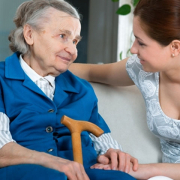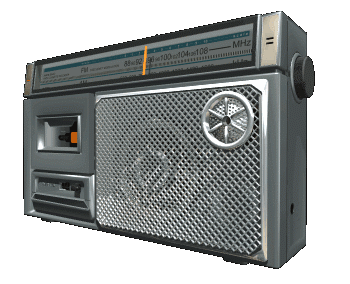Does it Work? Yep. And Now We Can Prove It.
We have always believed that technology could keep seniors safe, healthy, and connected. This belief is why we do what we do at GrandCare. But can we prove it really is effective for clinical situations? Well that’s an easy answer. Yes. And we have the data to back it up. GrandCare does help the senior and disabled population to stay healthier, while bringing down the cost of care.
In recent case studies, the clients used GrandCare in conjunction with 24/7 case management services. GrandCare automatically recorded patient vitals, reminded patients when to take vitals or medications, passively monitored activity patterns, and triggered rule-based alerts to notify caregivers if something seemed amiss. Caregivers could preventatively address situations, often with simple and inexpensive remedies. These included everything from phone calls, HIPAA-compliant video chats, med changes or, if needed, clinical care. Many clients eligible for nursing home care were able to remain at home.
Overall, the results were remarkable. Patients were healthier, ER visits and hospital readmissions dropped, and senior satisfaction was much higher.
Hospital Readmission Studies
- One Georgia study used GrandCare technology in conjunction with case management services and found hospital readmissions reduced by 51% from pre-pilot rates.
- Another study with older adults eligible for nursing home care utilized GrandCare’s passive technology to monitor ADLs and IADLs and found fewer acute hospitalizations, ER visits, LTC days, and SNF admissions.
- Maryland participants in a GrandCare program saw a 58% reduction in acute care admission rates, for a savings of $372,672.
- These Maryland participants also experienced a reduction in the all-cause 30-day readmission rate to 4.5% (compared to the 15.95% state average), for a savings of $25,880. The cost to deliver this technology-enabled care was only $6,600.
Emergency Department Utilization
- One initiative using GrandCare Technology to manage patients with high emergency department utilization achieved a 75% reduction in ER visits.
- In a passive technology pilot with nursing home eligible patients at risk of falls and living alone, utilization of ER, long-term care and SNFs were all reduced by at least 10%.
Improved Self-Management
- A patient population using GrandCare Technology demonstrated 88% adherence to their medical device and medication reminder treatment regimen.
- Participants using GrandCare reported a willingness to become more engaged and felt an increased awareness in self health.
Improved Satisfaction
- Participants in the Maryland study reported high levels of patient satisfaction.
- For patients in the Georgia group, 93% reported satisfaction with services.
- In a pilot of 22 patients using GrandCare, 100% of respondents agreed with the statement, “I have no difficulty telling others about the benefits of the system.”
Chronic Disease Management
- Patients using GrandCare with Uncontrolled Diabetes demonstrated improvements, with A1C (blood glucose) values at or below their baseline.
- In those patients managing Congestive Heart Failure (CHF) with the combination of GrandCare telehealth monitoring and care coaching, 96.5% of them maintained or improved their baseline NYHA classification score.
- For patients managing Hypertension with GrandCare, care coaching, a BP cuff and telehealth tools, 84% were able to maintain or improve their JNC-7 classification score.
Cost-Effectiveness
- One study found that the initial investment in technology was recouped in 1-3 years due to reduced costs of care.
- The total savings in reduced acute admissions was $372,672 for patients using GrandCare with RPM and care management, while the cost to administer this technology-enabled care was $64,500. Leaving the total cost savings at $308,172.
GrandCare facilitates better care, better outcomes, lower costs, while improving patient satisfaction. We always knew that was true. And now we can prove it.









 Lily Sarafan sees an opportunity—and it’s at the opposite spectrum of the smart home as envisioned by Intel’s Eric Dishman. “We’re positioning for post-hospitalization,” says Sarafan. The 30-year-old is the president of Palo Alto, Ca.-based Home Care Assistance, which is in the very low-tech business of providing expert caregivers by the hour or as live-ins. Their non-medical tasks include assisting with walking, making sure patients take medications on time, driving them to doctor appointments, and cooking healthy meals. (Home Care Assistance posts on its site a testimonial from famed MIT linguist Noam Chomsky who praised it in helping his late wife).
Lily Sarafan sees an opportunity—and it’s at the opposite spectrum of the smart home as envisioned by Intel’s Eric Dishman. “We’re positioning for post-hospitalization,” says Sarafan. The 30-year-old is the president of Palo Alto, Ca.-based Home Care Assistance, which is in the very low-tech business of providing expert caregivers by the hour or as live-ins. Their non-medical tasks include assisting with walking, making sure patients take medications on time, driving them to doctor appointments, and cooking healthy meals. (Home Care Assistance posts on its site a testimonial from famed MIT linguist Noam Chomsky who praised it in helping his late wife).



